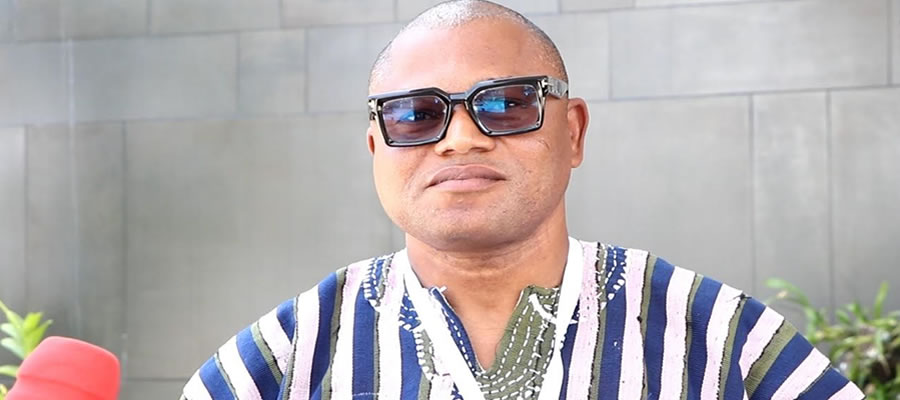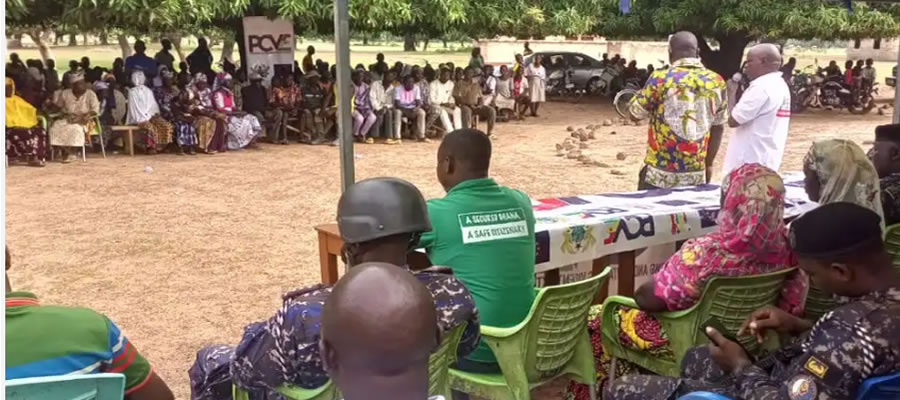

The importance of education in the social Services delivery and economic development of the people cannot be overemphasized. The situation of education in the District is as indicated below.
Educational Facilities
The District has a total of two hundred and Seventy-Six (276) Educational Institutions comprising ninety (90) public KG and twenty five 25 private Nurseries/KGs, Ninety (90) public Primary and twenty three 23 private primary schools, thirty eight (38) public Junior High Schools, six 6 private Junior High schools, two (2) Public Technical/ Vocational and One (1) Public Senior Secondary Schools and One private SHS.
All primary Schools have pre-school facilities since it is the goal of the Nation to integrate Early Childhood Development Centres in the formal education system. A number of NGOs, Collaborators and Development Partners have played and continue to play various roles in the development of education in the District.
Nevertheless, there is still much to be done in view of the increasing demand for basic education. Some of the schools seriously lack classroom blocks, Water and Sanitation Facilities, as well as furniture as children sit on stools and stones in the class.
The tables below show the breakdown of the educational infrastructure. Thus number of schools specifying those with standard structures
It can be observed from the table and bar chart above that between the periods of 2010 and 2012 educational infrastructure has increased by only 16 representing 7.2% of the already existing facilities with Day Nurseries taking 3 (18.7%) of the newly established facilities and 7 (43.75%).
The pace of increment has been low. There is therefore the need to pay particular attention to improving the number of existing Schools. Some Private Day Nurseries a Private Primary School collapsed in the period.
It is worth noting that within the period, intensive rehabilitation and reconstruction works were done particularly on dilapidated school facilities and schools under trees. On the average, most schools are currently in good conditions compared to 2010.
From the table below, the gap between boys enrolment and girls enrolment has been reducing over the years thus from 45% girls in 2010 to 47.2% girls in 2013. This has been the result of a number of interventions put in place by government (capitation grant) and some NGOs to arrest low enrolment and high dropout rate particularly for girls at the JSS level.
The gross enrolment at JSS level (58.4%) is not encouraging when compared to enrolment at the Primary level. Contrary to the situation in primary, enrolment for boys far supersedes that of girls. This according to educational authorities is due to elopement, teenage pregnancy and the unwillingness of some parents in maintaining girls in school because of the prevailing poverty and patriarchal believes among some of the people. Public sensitization and financial support is therefore paramount if girl enrolment is to be brought to desired levels in the JSS.
Spatial Distribution of Educational Facilities
Form the table above it can be observed that the schools in the District are distributed according to eleven circuits namely Garu West, Garu East, Denugu, Basyonde, Worikambo, Woriyanga, Bugri, Tempane, Tubong, Kpikpira, Songo. This aim is to enhance effective monitoring of school activities by circuit supervisors in view of the increased enrolment in primary schools and the need to improve upon the quality of teaching and learning.
There is a relatively fair distribution of educational facilities among the circuits as far as Pre School and basic educational facilities are concerned. All circuits have Nurseries, Primary and JSS. Only one circuit (Tempane) has SHS. There are also two (2) Vocational/Technical Senior High Schools in the District located in Garu East circuits.
Staffing in Basic Schools
There has not been any significant change in the staffing situation even after the appointment and posting of the pupil teachers. Most schools in the remote areas are still poorly staffed. The current pupil-teacher ratio is 1: 64 at the primary and 1:30 at the JSS respectively as compared with 1: 60 and 1:33 in 2010. The high pupil teacher ratio at the primary is due to increasing enrolment levels and the decreasing number of teachers posted to the District. Tables above and below presents the staffing situation in both primary and JSS
In terms of training, 30.3% and 35.5 % of Primary and JSS school teachers respectively currently have the requisite qualification as compared with 35.7% and 36.1% in 2010. Thus the situation in both Primary and JHS has deteriorated as percentage of qualified teachers has dropped. Besides, there is yet the need to ensure equitable and fair distribution of qualified teachers among the Primary and JHS to improve upon the quality of teaching especially the Primary level where trained and competent teachers are most needed.
The enrolment figures for the different school categories are low compared to children who are supposed to be attending those schools.
The Percentage change between the two years is not very encouraging except at the SSS level.
As these are also average figures the situation is believed to be worse in the rural areas and especially for girls. The introduction of the Capitation Grant and School Feeding Programme is however changing things round.
The performance at BECE is also not encouraging, only 16.4% of registered candidates passed in 2010/2011 BECE , 15.0% in 2011/2012 BECE and 33.5% in 2012/2013 BECE.
In totality, the factors that lead to this unacceptable picture in the educational sector are:
- Unwillingness of some parents to send their children to school.
- In ability of some parents to pay their children school levies
- Inadequate personnel, both teaching and none teaching
- Poor educational infrastructure e.g. 375 classrooms needed.
- All these result in a low literacy rate of about 10% in the District.
There is the need to sponsor teacher trainees in the District, improve teacher’s accommodation and classroom infrastructure, improve furniture and embark on enrolment drive especially of the Girl-child through public education and other activities that would discourage irresponsible parenthood.
Challenges
- Generally the problems in the educational sector include:
- Inadequate staffing
- Inadequate teachers bungalow
- High dropout rate at the JSS level especially for girls.
- Inadequate logistics for monitoring
- Low sponsorship to teacher trainees
- Inadequate classrooms for some schools
- Bad structures in some schools
- Inadequate incentives for teachers in deprived communities
Date Created : 11/20/2017 7:23:47 AM











 facebook
facebook
 twitter
twitter
 Youtube
Youtube
 +233 593 831 280
+233 593 831 280 0800 430 430
0800 430 430 GPS: GE-231-4383
GPS: GE-231-4383 info@ghanadistricts.com
info@ghanadistricts.com Box GP1044, Accra, Ghana
Box GP1044, Accra, Ghana